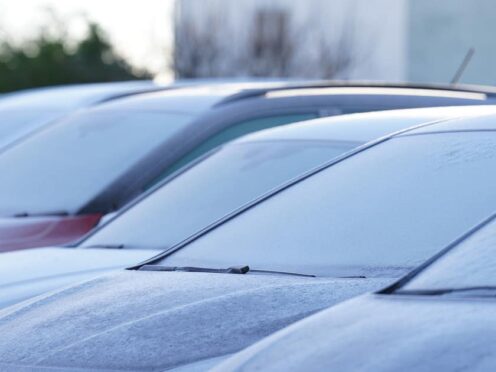Motorists are being warned to check the small print in their insurance policies, after research found that a shrinking proportion of “comprehensive” deals fully cover replacement windscreens.
Defaqto, which maintains a financial product database, found in late February that just over half (53%) of comprehensive insurance products would pay out the full costs to replace a windscreen, subject to any policy excess (the amount the customer pays towards the cost of the claim) which applies.
This proportion has reduced from just over seven in 10 (71%) products five years ago which would pay out for windscreens in full, subject to the policy excess.
Mike Powell, a motor insurance expert at Defaqto, said: “As windscreens become increasingly hi-tech, the cost of replacing them can vary from £250 to £2,500. At the same time, we’ve started to see a number of comprehensive motor insurance policies remove windscreen cover from their offering.
“Our concern is that although these products clearly explain that cover is not available, some consumers may simply look at the overall price and not realise that windscreen cover is excluded.”
Many modern cars have advanced driver assistance systems (ADAS) such as emergency brake assist and adaptive cruise control, which are typically controlled by sensors in the windscreen, Defaqto said.
When a windscreen is replaced, sensors need to be recalibrated so that the ADAS systems continue to work.
Defaqto has been tracking what is stated within insurance providers’ policy documents to confirm that the costs for a “windscreen recalibration” are covered under the windscreen cover of a comprehensive car insurance policy.
Mr Powell said: “We look at whether cover is clearly defined with specific wording, is not clearly defined, or if cover is specifically excluded. Back in 2020, 85% of policies did not clearly define whether cover was provided or not.
“Today, there are still around four in 10 products that do not clearly define this area of cover, so although the market is improving, it’s an important aspect to check before purchasing cover.”
Figures from the Association of British Insurers (ABI) showed that between October 1 and December 31 2023, the average price paid for private motor cover was £627, up from £470 during the same period a year earlier.
The ABI recently said it is exploring various ways to tackle the rising cost of motor cover.
A spokesperson for the ABI said: “In the face of rising costs, motor insurers are determined to continue to offer as competitively priced cover as possible. Shopping around can help you manage your motor insurance premium, but always check the scope of cover on offer to ensure it meets your needs.”
Here are some tips from Mr Powell when considering a motor insurance policy:
– Always check whether the policy includes windscreen cover. Do not assume that because you have bought comprehensive cover this benefit is automatically included.
– Make sure that you are aware of any overall limit that may apply for windscreen replacement claims. In some cases, high-tech windscreen replacements may cost more than the cover limit.
– When making a windscreen claim, look for the “approved repairers” listed by the insurance provider. If someone uses their own repairer, such as a local garage, they may potentially find that the policy has lower cover limits, or that a higher excess applies.
– If the policy wording does not specifically mention if cover is provided for “windscreen recalibration costs”, always check with the insurance provider directly to confirm whether it is included.
– Before purchasing the policy, check the excess that is applicable for a windscreen replacement.
– If you get a chip in your windscreen, typically insurance providers will pay for the costs of repairing the chip and usually apply a lower excess for these types of claims – so acting early and getting the chip repaired may potentially save someone money in the long run.
